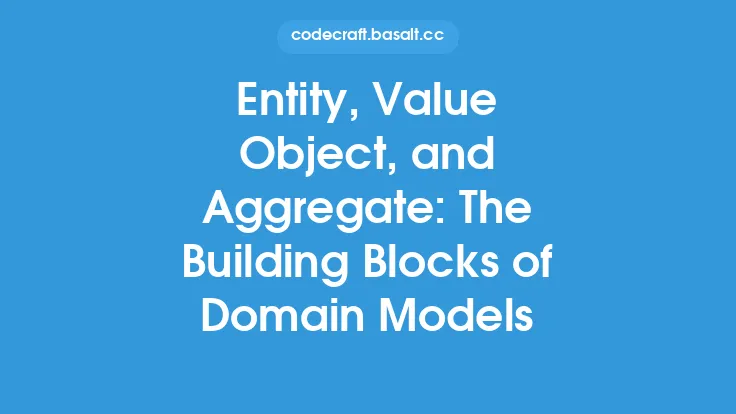When designing and implementing software applications, it's essential to capture the history of the application's interactions, decisions, and changes. This is where domain events come into play. Domain events are a fundamental concept in domain modeling, allowing developers to record and track significant occurrences within the application's domain. In this article, we'll delve into the world of domain events, exploring their importance, benefits, and implementation details.
Introduction to Domain Events
Domain events are objects that represent something significant that has happened in the domain. They are used to capture the history of an application, providing a record of all important events, such as changes to data, user interactions, or system decisions. Domain events are typically immutable, meaning they cannot be changed once created, and are often stored in a database or event store. This allows developers to maintain a complete and accurate history of the application's activities, which can be useful for auditing, debugging, and analytics purposes.
Characteristics of Domain Events
Domain events have several key characteristics that distinguish them from other types of events. Firstly, they are domain-specific, meaning they are relevant to the application's domain and are used to capture significant occurrences within that domain. Secondly, they are immutable, ensuring that once an event is created, it cannot be altered or deleted. Finally, domain events are typically serialized and stored in a database or event store, allowing them to be retrieved and analyzed later.
Benefits of Domain Events
The use of domain events provides several benefits, including improved auditing and debugging capabilities, enhanced analytics and reporting, and increased flexibility and scalability. By capturing the history of an application, domain events allow developers to track changes and identify potential issues, making it easier to debug and resolve problems. Additionally, domain events provide a rich source of data for analytics and reporting, enabling businesses to gain valuable insights into their operations and make informed decisions.
Implementing Domain Events
Implementing domain events requires careful consideration of several factors, including event storage, event handling, and event serialization. When it comes to event storage, developers must decide how to store and manage domain events, such as using a relational database, NoSQL database, or event store. Event handling involves defining how the application will respond to domain events, such as triggering notifications or updating data. Finally, event serialization requires converting domain events into a format that can be stored and retrieved, such as JSON or XML.
Event Sourcing
Event sourcing is a related concept that involves storing the history of an application as a sequence of domain events. This approach allows developers to reconstruct the application's state at any point in time, providing a complete and accurate record of all changes. Event sourcing is often used in conjunction with domain events, providing a powerful way to capture and analyze the history of an application.
Domain Event Patterns
Several patterns have emerged for working with domain events, including the Event Sourcing pattern, the Event Store pattern, and the Domain Event Handler pattern. The Event Sourcing pattern involves storing the history of an application as a sequence of domain events, while the Event Store pattern provides a centralized repository for storing and managing domain events. The Domain Event Handler pattern defines a standard way to handle domain events, such as triggering notifications or updating data.
Best Practices for Domain Events
When working with domain events, several best practices can help ensure success. Firstly, domain events should be immutable, ensuring that once created, they cannot be altered or deleted. Secondly, domain events should be serialized and stored in a database or event store, allowing them to be retrieved and analyzed later. Finally, domain events should be handled consistently, using a standard approach to respond to and process events.
Common Challenges and Pitfalls
When implementing domain events, several challenges and pitfalls can arise. One common challenge is ensuring that domain events are properly serialized and stored, requiring careful consideration of event storage and handling. Another pitfall is failing to handle domain events consistently, leading to inconsistencies and errors. Finally, domain events can introduce additional complexity, requiring careful management and analysis to ensure that they are providing value to the application.
Conclusion
Domain events are a powerful tool for capturing the history of an application, providing a record of significant occurrences within the domain. By understanding the importance, benefits, and implementation details of domain events, developers can create more robust, scalable, and maintainable software applications. Whether using event sourcing, event stores, or domain event handlers, domain events offer a valuable way to track changes, analyze data, and make informed decisions. As software applications continue to evolve and grow, the use of domain events will become increasingly important, providing a foundation for building robust, scalable, and maintainable systems.





